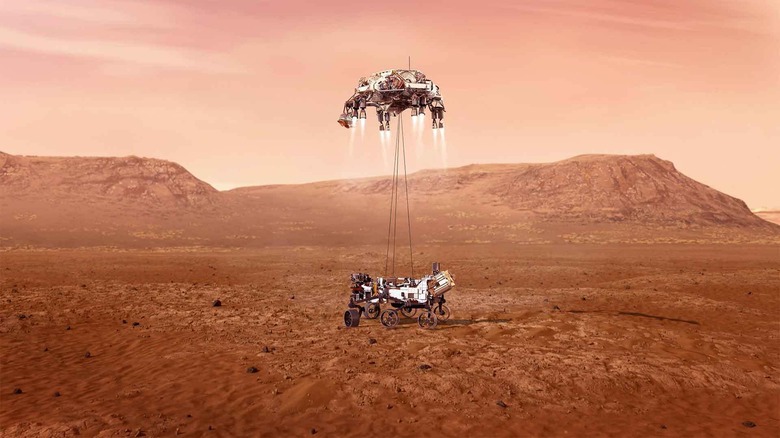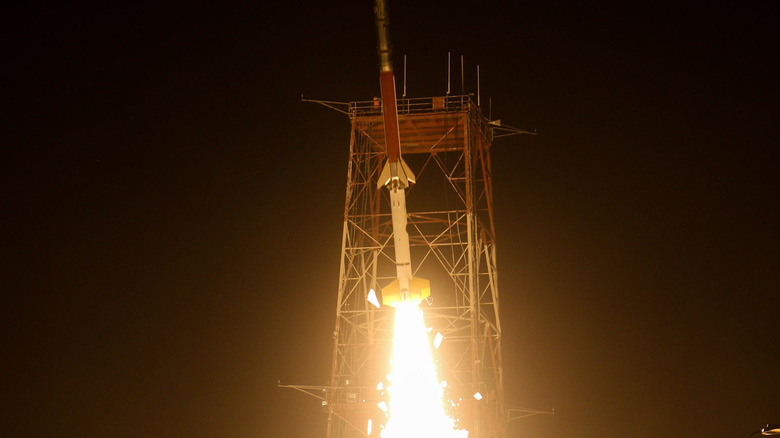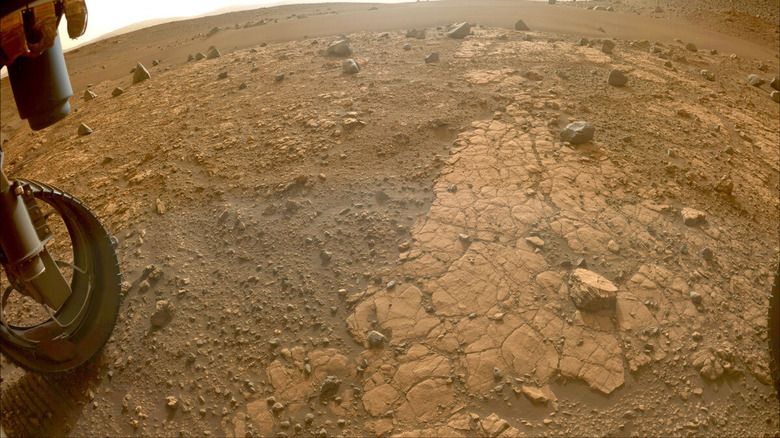Scientists Are Unlocking The Secrets Of Safe Planetary Landings: Here's How
As we explore further and further into the solar system, space projects are running into an engineering challenge: how to land on another planet. Most missions today are launched using a rocket that carries a craft into space and then deploys it. The spacecraft will travel on to its destination, such as Mars, before dropping off hardware such as a probe or rover which travels through the atmosphere and lands on the planet's surface.
That's difficult to do, but space agencies are getting better at it, especially when it comes to places like Mars where we have been sending landers for decades. Modern landing systems use a combination of techniques such as parachutes and thrusters to control a landing and make sure the hardware touches down safely, and not so fast that it causes any damage.
But the tools we're sending out into the solar system are getting bigger, heavier, and more complex. The first Mars rover, for example — launched in 1996 and called Sojourner — was about the size of a microwave. Modern Mars rovers like Curiosity and Perseverance which are currently exploring Mars are around the size of a small car.
All of that weight requires more powerful landing thrusters so the rovers don't crash straight into the planet. But the way thrusters work can be complicated by factors like the composition of the atmosphere, the amount of dust present, and the surface they are approaching.
Modeling rocket plumes
To help understand this, scientists have created a computational model of how the flame-like material coming out of the back of a rocket, called a rocket plume, interacts with the surface of a planet or other body. As it is hot and sends out material at high speeds, this plume throws up material off the planet's surface. This can create clouds of dust and debris which could potentially damage a rocket as it attempts a landing.
"Understanding the interaction between the rocket plume and the surface is important for the safety and success of space missions in terms of contamination and erosion, landing accuracy, planetary protection, and engineering design, as well as for scientific understanding and future exploration," explained Byoung Jae Kim of Chungnam National University, the lead author of the study, which appears in the journal Physics of Fluids.
The model created by the researchers considers factors related to the rocket like its engines, as well as environmental factors like the atmosphere and gravity of the body being landed on, and creates estimates of the size, shape, temperature, and pressure of the rocket plume that would be created. It can also estimate how much material would be displaced — meaning, essentially, how much dust and debris would be thrown up from the surface. This helps to plan out missions and to consider how to land rockets safely and whether a landing pad would be required.
The challenge of landing
The way that dust is thrown up by a rocket landing and the problems that it can cause is not always intuitive. For example, smaller particles of dust can actually cause more problems for a rocket than larger pieces of debris.
That's because small pieces of the Martian surface, called regolith, can be thrown very high into the air and cause effects called brownouts, where power is interrupted briefly which can cause problems during landing. When larger pieces are thrown up, they don't reach so high and also are less likely to gum up electrical systems. So it's important to know what rocket plumes create small versus larger dust particles.
"The insights gained from this study of the effects of different parameters on plume-surface interaction can inform the development of more effective and efficient landing technologies," said Byoung Jae Kim. "The study also sheds light on the festooned scour patterns that can be observed on planetary surfaces, which can provide valuable information for future scientific investigations of planetary bodies."


